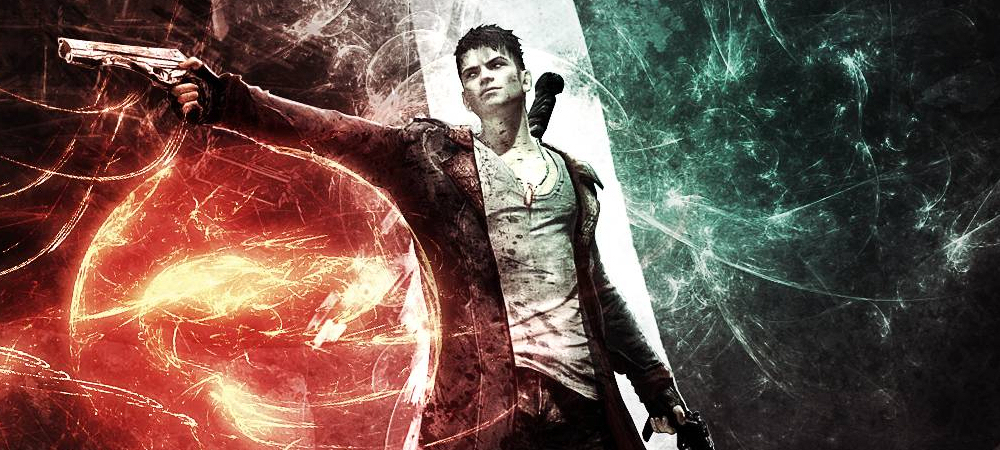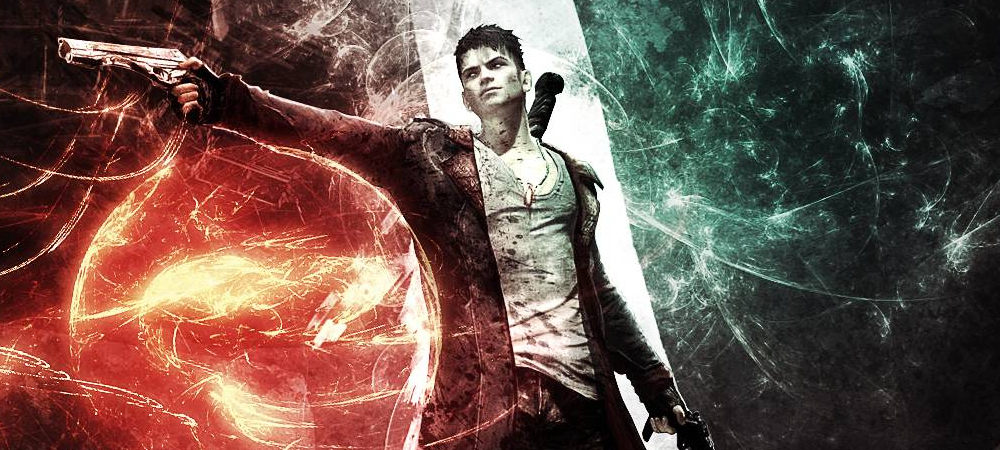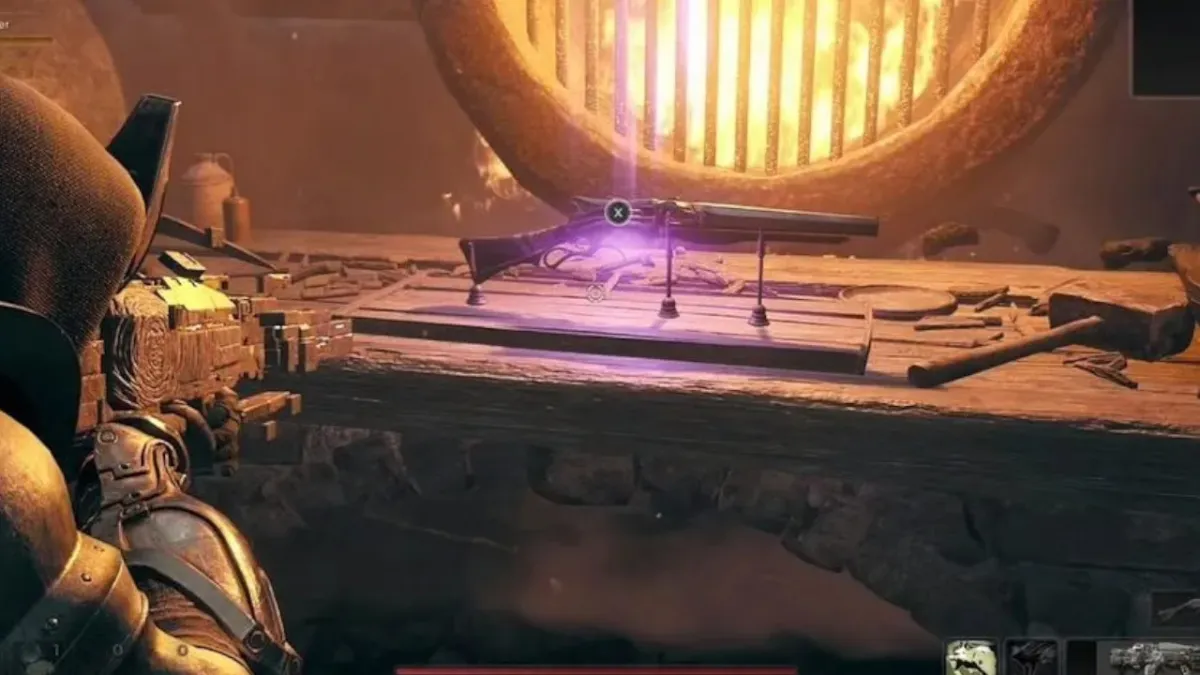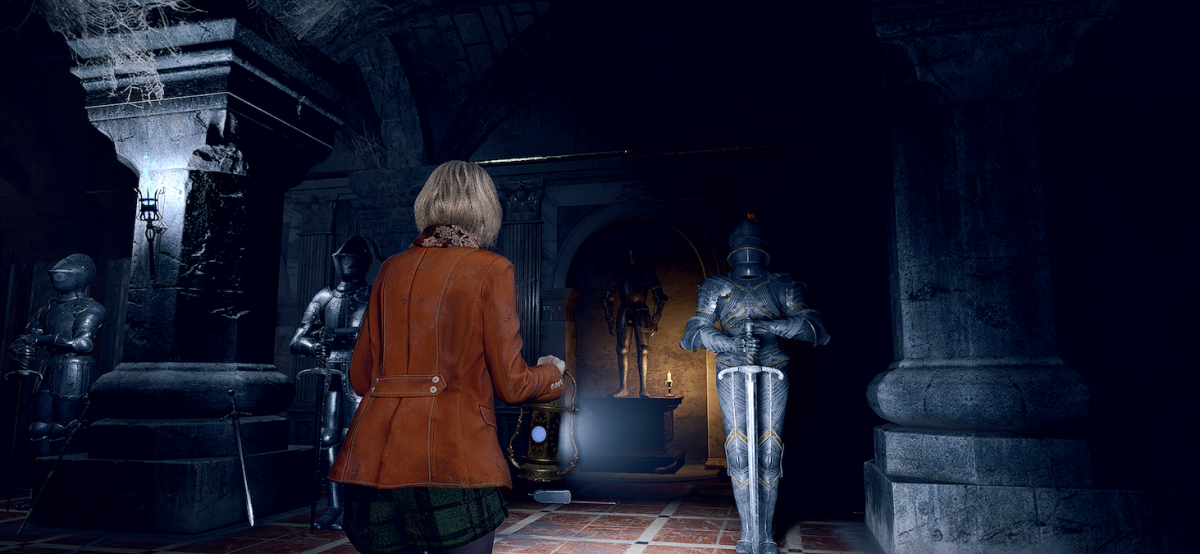Dante’s Winferno
DmC: Devil May Cry is an insult. It insults the fans, who have loyally supported Capcom through thick and thin, and it insults the legacy of a most respected action series. Ninja Theory has spat upon one of the last pure names in gaming, though for Capcom, it’s just another twist of a long-rusted knife. Also, Mega Man Legends 3.
The above paragraph was for people who are reading this review specifically to be told something like that. Now they’re satiated, let’s have ourselves a review.

DmC: Devil May Cry (PlayStation 3, Xbox 360 [reviewed], PC)
Developer: Ninja Theory
Publisher: Capcom
Released: January 15, 2013 (PlayStation 3, Xbox 360) / January 25, 2013
MSRP: $59.99
Let’s not beat around the bush. Those looking for hardcore action in the same vein of the previous four titles will be disappointed. DmC: Devil May Cry is easier. It’s simpler. Chaining combos and gaining S ranks are not challenging at all, at least on the normal difficulty setting. It doesn’t run at 60 frames-per-second on consoles. For some, the alteration of these elements will have killed the very essence of Devil May Cry, and to those people, I can only sympathize, because this game simply is not for them.
This is not to say, however, that every fan of prior installments shall walk away empty handed. Those who came to the series predominantly for its commitment to ridiculousness, its audacious sense of style, and a combat system that leaves them feeling highly amused, have everything they need for a fantastic time, and may find themselves favoring Ninja Theory’s effort more than any other game in the series.
Retelling the story of the Son of Sparda, DmC seems to take most of its narrative cues from the classic Roddy Piper movie, They Live. Humanity is being kept docile and unwittingly enslaved, Earth’s “reality” little more than a mask for a Hellish alternative world full of subliminal messages and twitching abominations. Dante is one of only a few capable of seeing the world as it really is and entering the twisted mirror world of Limbo, where messages like “OBEY” hide behind advertising posters, and consumer products are revealed for the monstrous intoxicants they really are.
DmC lays the satire on thick — perhaps a little too thick — skewering the finance industry, FOX News, and consumer culture with little mercy and less subtlety. At the heart of this is Dante — an angrier, more aggressive, less camp take on the iconic protagonist we’ve come to know who, over time, becomes no less affable for all his differences. The story is as silly as a Devil May Cry story’s always been, but thanks to some solid voice acting and terrific motion capture animations, it remains believable and suffers from no deficit of enthusiasm.

While DmC retains much of the aesthetic charm of the series, there are many differences under the hood. DmC is a quicker game overall — its combat is less methodical and precise, though not as deep as a result. Progression through a chapter is likewise lacking in obstacles and puzzles, but instead emphasizes swift traversal and platforming. As much time is spent navigating ever-twisting corridors and chasms, grappling and gliding through the air, as it is hacking demons to pieces. Again, this will disappoint some gamers, but others — myself included — shall appreciate a title that feels overall less ponderous and more fluid.
The foundation of Dante’s adventure is the ability to embrace both his demonic and his angelic qualities. By simply holding the left or right shoulder buttons, Dante is able to access angel and demon weapons respectively. In his normal form, Dante wields his traditional sword and twin pistols. His angel form eventually utilizes a scythe and whirling blades designed for crowds of enemies, while his demon form can access a brutal axe and a pair of molten fists that deal huge damage at a cost to speed. Dante can also grapple enemies, a’la Nero from Devil May Cry 4, and again his two forms utilize this ability differently, with the angel grapple pulling our hero toward opponents, and the demon grapple pulling enemies towards him.

As the game progresses, Dante’s on-the-fly form changes are increasingly emphasized both within combat and without. Aside from recurring enemies displaying immunity to certain weapon types, there exist floors that deal damage to Dante if he’s not in the right form, and various grapple points that must be dragged or clung to, with the player often required to change form and grab obstacles multiple times in mid-air. These requirements give platforming sections a more thrilling edge than they’d otherwise have, though I feel Ninja Theory could have made them even more demanding than they are. They look and feel great, but I was always waiting for something incredibly complex from the environments, and never quite got them.
That said, optional secret missions can be unlocked to explore the concept further. These timed missions demand certain activities be completed utilizing specific forms, or really expand the platforming into something more taxing. Players are rewarded with health boosts after completing every four secret missions, though finding the keys and the doors required to discover them is a challenge in and of itself.
With access to so many instantaneous weapons, switching combat styles to rack up bonus points has never been easier, and even a moderately skilled player will be casually grabbing “SSS” rankings provided they keep it varied. Again, if one’s joy came from feeling accomplished in these rankings, this will be a cause for consternation. For those who want a lot of weapons with which to beat the stuffing out of hordes of enemies, DmC has them supplied to an ample degree. It’s a solid combat system, one that definitely fails to reach the levels of depth found elsewhere in this particular series but, in all honestly, stands head and shoulders above the majority of most action games.

What Ninja Theory may have lost in the streamlining of the combat, it more than makes up for in terms of atmosphere and level design. Limbo, inspired as it may be by eighties sci-fi films starring Scottish wrestlers, is as twisted and oppressive as it is colorful and varied. While Dante fights through each chapter, the world contorts around him, hateful messages popping up on walls and floors, encouraging Dante to fight back by yanking debris and pulling himself toward higher ground. The way in which the environment serves as both a narrative device and dynamic obstacle course yields elegant results, making DmC‘s twenty levels some of the most intriguing and original I’ve seen in quite some time.
Nowhere is this more evident than with the bosses. From a foul-mouthed vomiting succubus to the cackling digital head of a demonic Bill O’Reilly substitute, each boss battle is bombastic, memorable, and gloriously stupid. Many of them provide environmental puzzles as well as combat challenges, blending the two gameplay elements remarkably well as Dante swings from platform to platform before seizing an opening in the foe’s attacks and closing in. Like elsewhere in the game, many of these huge fights focus on Dante pulling objects or pulling himself, a focus that brings some delicious imagery during one particularly motherly battle.

The artistic stylings of Ninja Theory, previously showcased in Heavenly Sword and Enslaved: Journey to the West, are surprisingly well adapted to the Devil May Cry universe. While the clashing colors and animation styles bear Ninja Theory’s unmistakable signature, the various demonic entities all retain a classic flavor, treading the line between “cool” and “unsettling” while boasting no shortage of visual intimidation. The aforementioned environments really run with this style, and areas such as a glitzy, near-psychedelic demon nightclub and a section taking place within a Raptor News logo are difficult not to fall in love with.
The game’s soundtrack evokes memories of Devil May Cry 3, providing some shameless background combat tunes, most notably from growling makeup aficionados Combichrist. Like any good DMC soundtrack, the music does a terrific job of getting one in the right mood, expertly punctuating the decadent scenes of violence with equally indulgent rock.

There is an argument to be made that, when judged alongside the rest of the series, DmC is a bad Devil May Cry game. The suggestion may be debatable, but there’s a potential case to be made. It’s more streamlined, it’s not as challenging, and ultimately it has stripped away what a significant portion of the fanbase love most of the series. However, even if one sides with the argument that this is a bad Devil May Cry game, that does not preclude it from being deemed a terrific videogame on its own merits, and in my estimation, that’s exactly what DmC: Devil May Cry is.
You can argue DmC‘s merits as a Devil May Cry entry all the live long day. You can bicker over whether or not it deserves the share a name with the series’ frankly spotty past. This, however, is not an argument I choose to indulge, because the bottom line is that DmC: Devil May Cry is a beautiful, bold, and supremely enjoyable videogame in its own right. It deserves to be praised.
Action games may come deeper and harder than this, but few are as pleasurable.
[Check out our complete coverage of Devil May Cry, including the controversial design overhaul. -staff ed]





